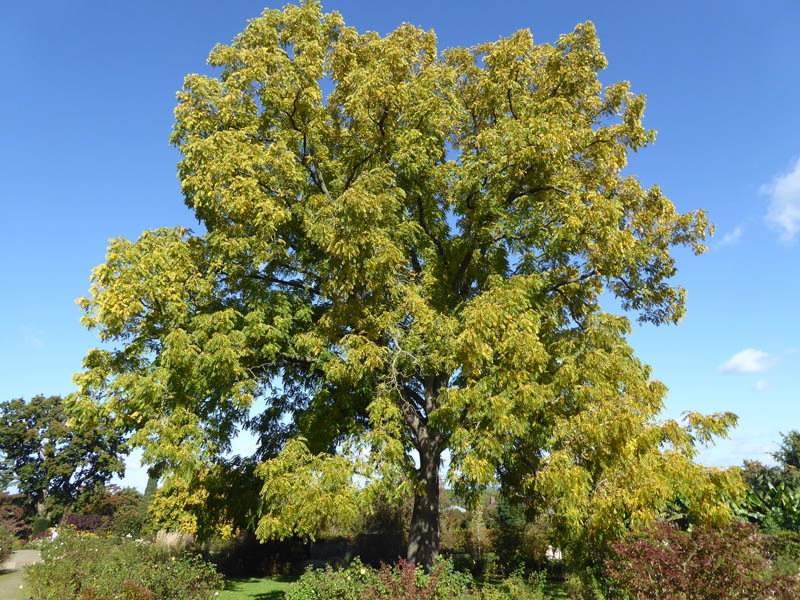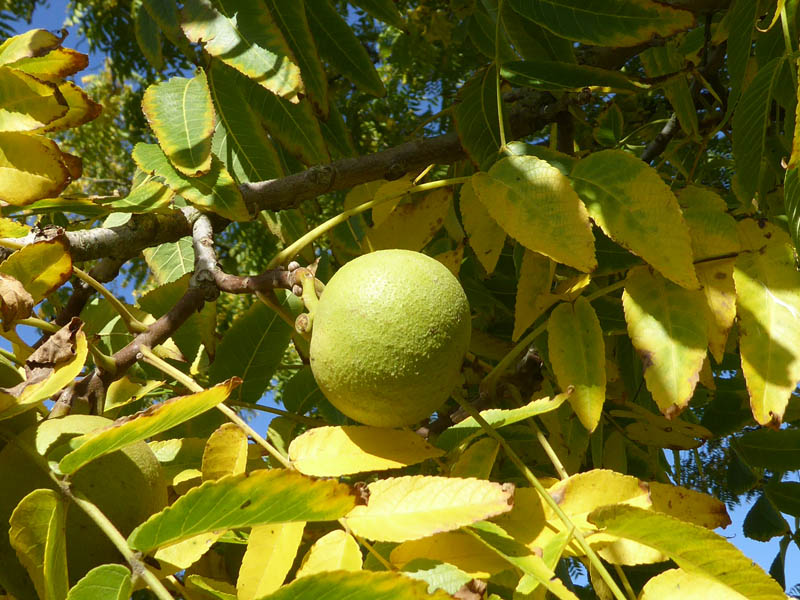Black walnut (BWA)
Black walnut (Juglans nigra), also called eastern black walnut and American walnut, is a highly valued tree in the Eastern USA. Found in mixed forests often as small groves on deep rich soils. The attractive, fine, straight-grained dark wood has been sought after and consequently many of the best trees in its native range have been felled. Cultivated since the mid 1600s in central Europe it has had little attention in Britain primarily due to climatic limitations. With a warming climate and its potential as a high value timber tree it could offer a place as an alternative to ash on good sites. The additional value of edible nuts could also see this species considered for agroforestry planting.
Black walnut is categorised as a secondary tree species. These are species that have demonstrated positive silvicultural characteristics in trial plots, but gaps in our knowledge constrain their wider use. The species is being actively evaluated to increase understanding and inform future deployment.
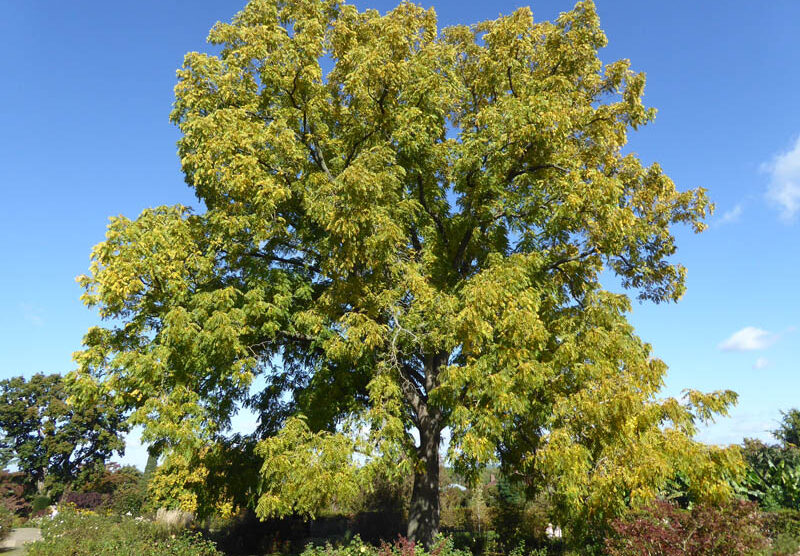
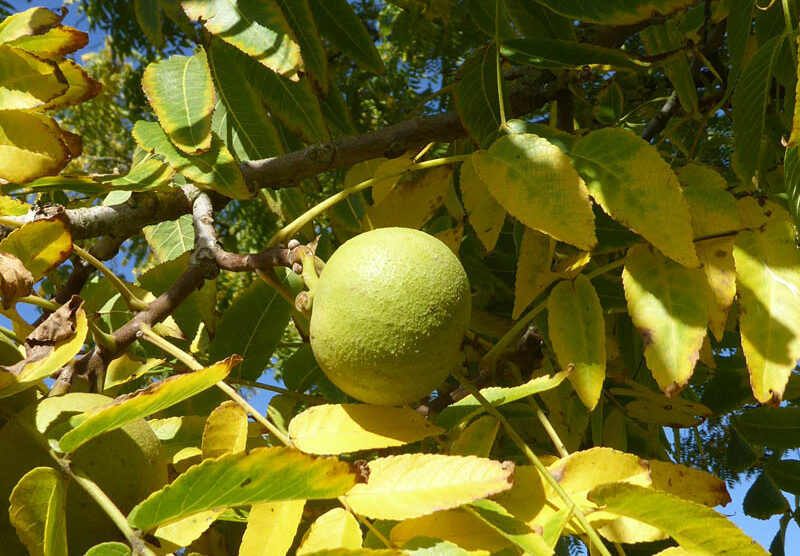
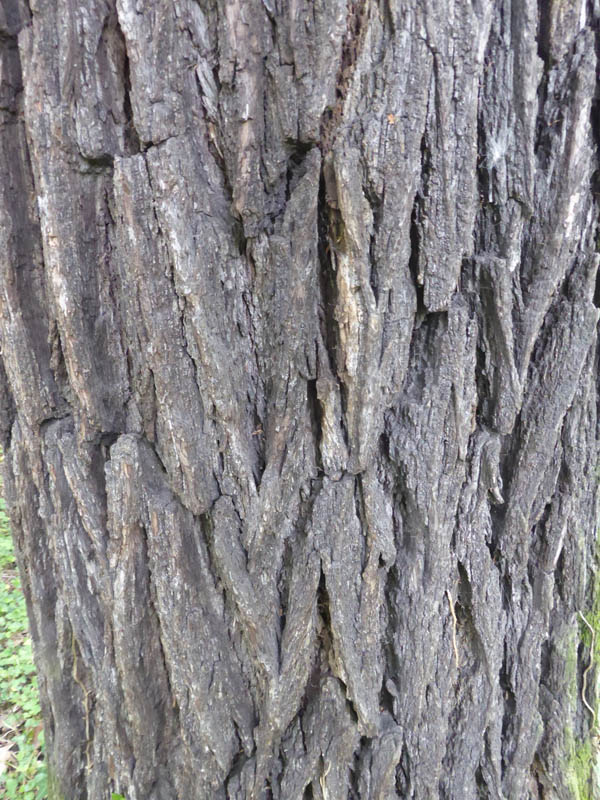
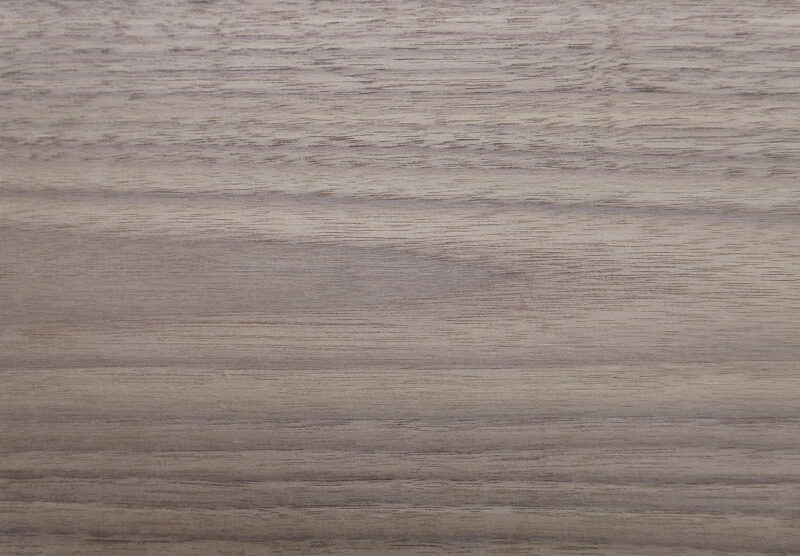
Range
Native to east and central North America, but has been grown in southern Britain and in western Europe for nearly four hundred years.
Provenance Choice
There is limited provenance information in Britain so material from the northern part of the natural distribution (New England, southern Ontario) or from existing stands in western Europe should be preferred. Alternatively, there are hybrids between black and common walnuts (Juglans x intermedia) that thought less sensitive to frost.
Key Properties
Site Requirements
Black walnut is best suited to warmer, more continental parts of lowland Britain with greater than 640 mm of rain per annum. It prefers well drained medium to rich soils of fresh to moist moisture status. It will grow on alkaline soils provided there is at least 60 cm of soil overlying the bedrock. It is not suited to waterlogged, compacted or very acid soils. The species does not tolerate exposure and is susceptible to damage from spring and autumn frosts. A sheltered and frost-free planting site is essential for satisfactory growth.
Further detail on the site requirements of black walnut in current and future climates can be examined using the Forest Research Ecological Site Classification Decision Support System (ESC).
ECOLOGICAL SITE CLASSIFICATION TOOL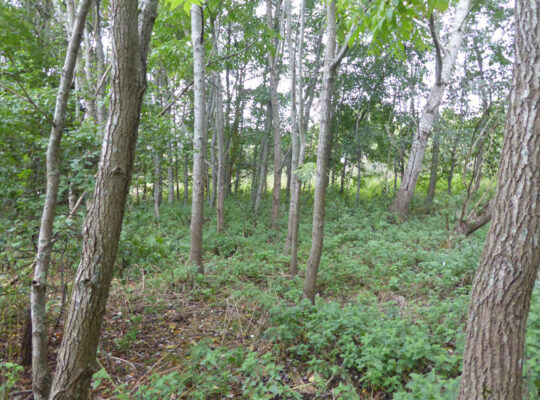
Silviculture
Black walnut is a light demanding species that is intolerant of competition whether from ground vegetation or from other trees. It develops a long tap root which is easily damaged when seedlings are lifted from bare-root nursery beds and can result in delayed establishment. Seedlings grown in deep containers are preferable planting stock. The long ‘carrot shaped’ tap root requires careful site preparation and potentially pit planting followed by several years of rigorous weed control if establishment is to be successful. Planting density is often around 1000 to 1500 stems ha-1 wherever quality sawtimber is an objective. Young trees can be cut back to the base (‘stumped’) and resultant regrowth singled to improve growth and form.
In its native range, black walnut typically grows as individual trees or small groups in mixture with a range of other broadleaves. This approach can be followed in Britain by creating mixtures with other broadleaved species like lime, wild cherry or silver birch that can provide shelter for the young walnuts. Nitrogen fixing shrubs such as autumn olive can also be helpful. To ensure sustained growth it is essential to maintain an open crown (< 25% of the crown with any competition) so regular thinning of mixtures is critical. Selected walnut stems should be pruned to about 6 m height to increase the outturn of valuable timber. A typical rotation will be 60 to 80 years for trees grown for sawn timber, when diameter at breast height (DBH) should be 40 cm or more.
The species starts to flower early, and regular seed production can occur from 15-20 years onwards. However, natural regeneration is rare in Britain and could be due to browsing or vegetation competition. Thus, planting is the most reliable method of establishment. In North America, the species is grown in agroforestry systems where it provides both nut production and an eventual timber crop.
Pests and Pathogens
Generally considered to be more resistant to Armillaria root rot (honey fungus) than common walnut. Black walnut needs protection from deer and rabbits.
See our other tools and resources
Further Resources
External
In addition to the general sources of information for species the following are useful for black walnut.
Clark, J. et al. (2005) The future of black walnut in Britain. Quarterly Journal of Forestry, 99(3), 207-212.
Ehring, A., Steinacker, L. and Nagel, R-V. (2019): Cultivation of black walnut and hybrid nut – Scientific findings and silvicultural experiences. Mitteilungen der Gesellschaft zur Förderung schnellwachsender Baumarten in Norddeutschland e.V. Heft 6/2019, 16 S. < Cultivation of the eastern American black walnut and hybrid walnut (waldwissen.net) > accessed 23Aug2023.
Nicolescu, V-N., et al. (2020) A review of black walnut (Juglans nigra L.) ecology and management in Europe. Trees, https://doi.org/10.1007/s00468-020-01988-7.

